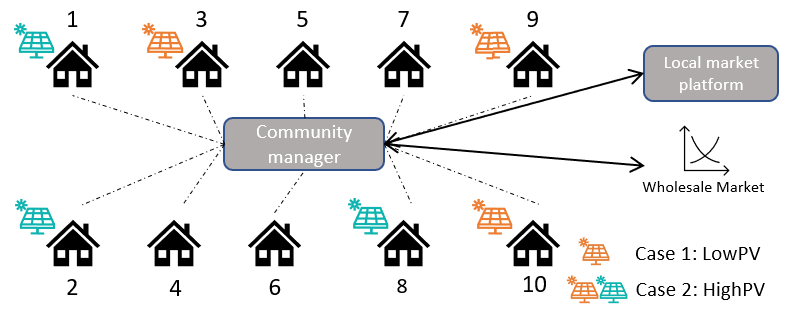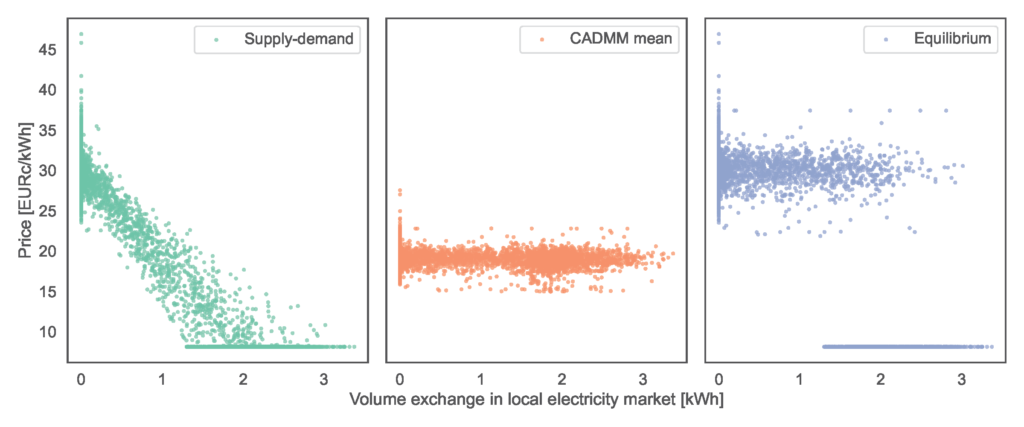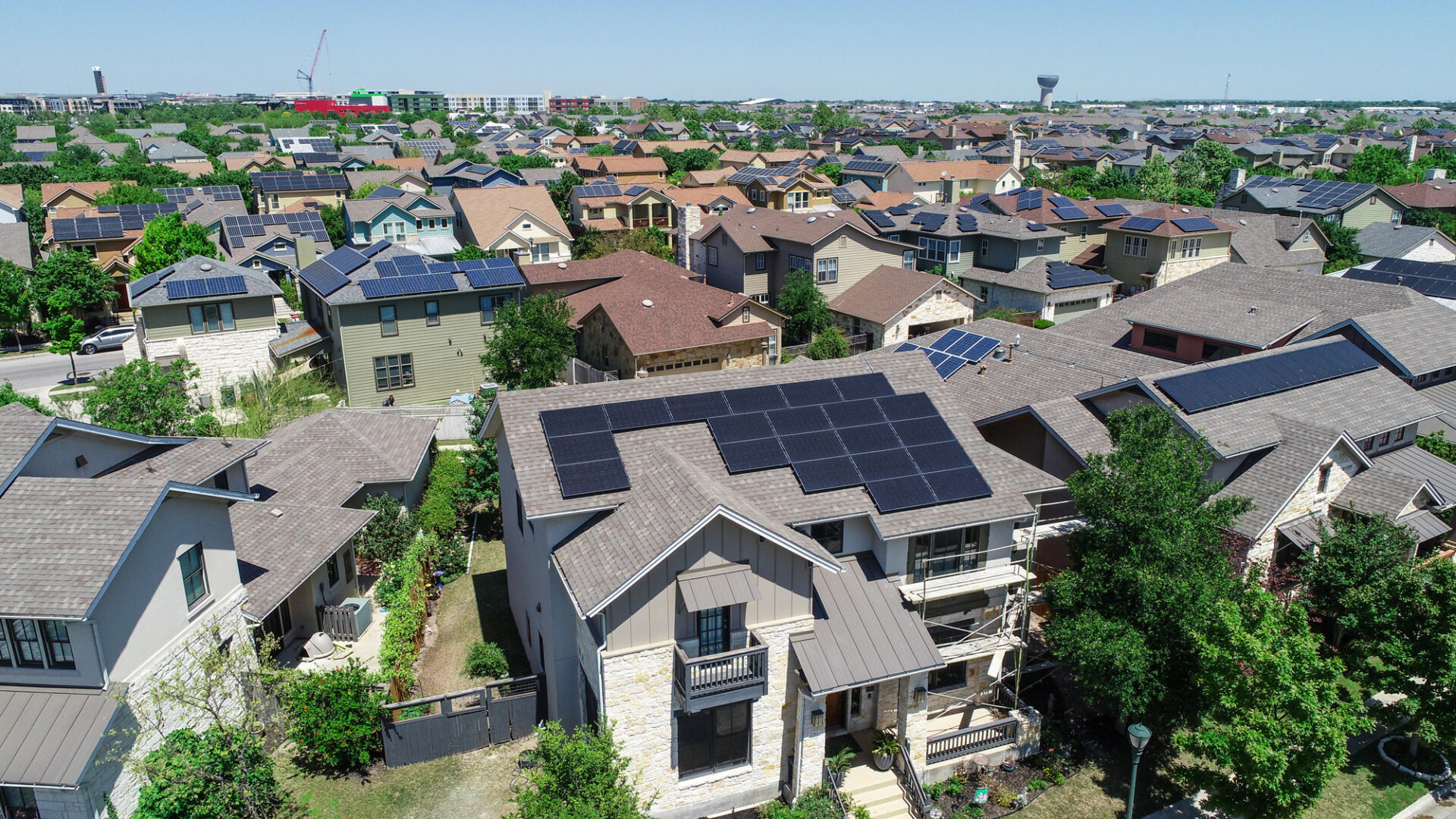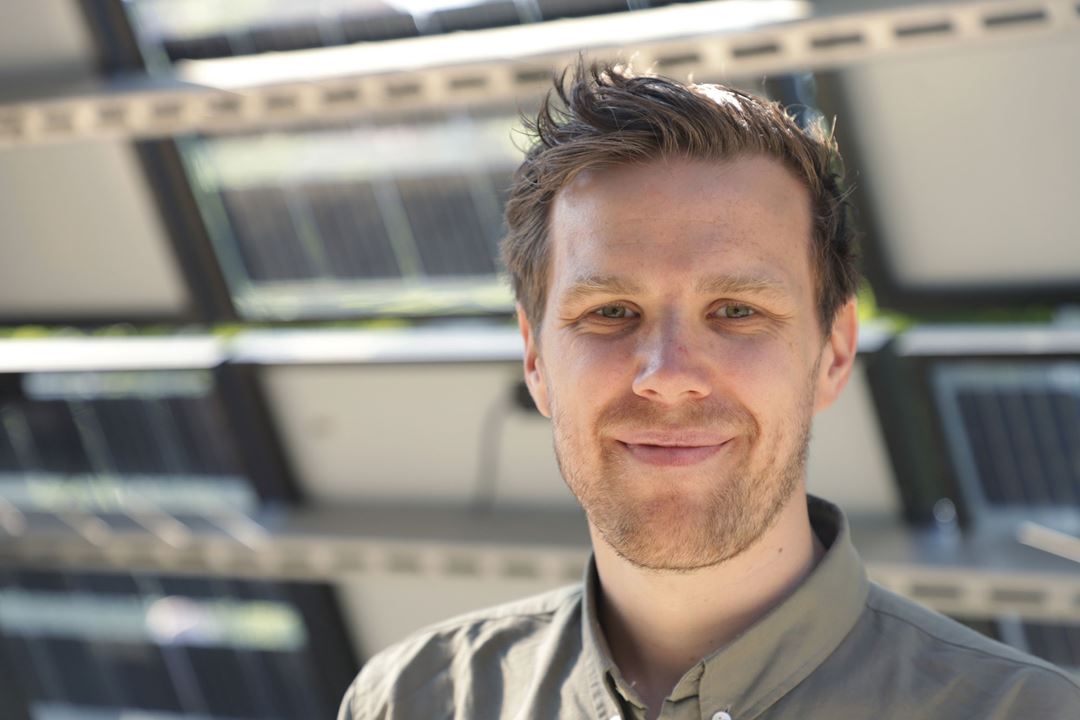This is an important design choice for a local energy community, as it directly impacts the profitability of a solar panel investment. How the price should be set, and what data needs to be shared are key questions that require answers for the realization of local energy trading.
To answer this question, we need a few assumptions. First, we assume that the two neighbors are economically rational, meaning that the seller seeks to get a better price from their neighbor than by selling to the retailer. The same principle goes for the buyer. The buyer would like to buy electricity at a lower cost than the alternative, i.e., buying from the retailer. This sounds like quite the paradox, but it is relatively simple and leads us to the second assumption.
The second assumption is that local electricity can be traded without being subject to taxes, fees or grid tariffs costs. In Norway, this has been agreed upon politically and will be introduced in October 2023 for installations up to 1000 kW inside a limited grid area. The suggested sharing scheme is primarily meant as a subsidy to incentivize solar deployment, but also has some socio-economic benefits such as better coordination between local generation and demand, alongside faster deployment of low-conflict electricity generation. Under this sharing scheme, we know that the seller receives a higher price than the retail electricity price, and the buyer pays less than the total electricity price including the abovementioned costs. Hence, we have lower and upper limits to what the price may be negotiated towards. So, how should the price be settled between these two limits in a way that is acceptable to all market participants?
We attempt to answer this question in our latest article (Local electricity market pricing mechanisms’ impact on welfare distribution, privacy and transparency), where we investigate the impact of three schemes for pricing local electricity trading for a local energy community with solar power, based on established methods from the research literature. The investigated methods are 1) supply-demand, 2) Consensus alternating direction method of multipliers (CADMM), and 3) equilibrium-based pricing. In addition to determining the local market price, the article also illuminates the impact of other important aspects such as welfare distribution, privacy concerns and transparency for the local market participants. To get comparable results, all three methods are applied to a generalized, representative case study of a local electricity market with different shares of solar generation as shown in the figure below.

The supply-demand scheme is a rule-based mechanism which finds the ratio between supply and demand and uses this to set the price between the lower and upper limit. If there is a high surplus of solar, the price will be very close to or equal to the lower limit as shown in the figure below. If there is little solar production and a high demand, the price will be set to the upper limit. Ratios that fall between these two extremes set the price between the two limits in a linear fashion. This scheme is simple, understandable and requires extremely little data sharing, which makes it advantageous as it is simpler to explain to the general population.

The CADMM scheme is based on an advanced optimization problem decomposition technique, hence making it much more complex and hard-to-comprehend for most. The tuning parameters also heavily influence the resulting prices, making CADMM critique-worthy when considering transparency. Furthermore, the CADMM results in higher local prices than the other mechanisms on average, making it less attractive for economically motivated consumers. However, the high prices make it a desired pricing mechanism for the PV owners and hence for those motivated by climate action. The limited need to share detailed data is also a plus.
The equilibrium approach represents the game-theoretic approach and should by economic theory definitions be the fairest as the price is set assuming perfect competition. The average local market price is between the two previous methods, making it an acceptable compromise for both buyers and sellers. Yet, the method suffers in terms of data privacy, as a lot of data from all market participants is required. These hindrances are not unsolvable but may be problematic to privacy-oriented consumers. The method benefits from its simplicity and transparency as the price is simply set at either the upper or the lower limit depending on whether there is more demand and supply – a concept familiar to many.
… the supply-demand scheme is the simplest and hence most transparent scheme. […] The equilibrium method is the most promising long-term candidate.
Counting the strengths and weaknesses of the three methods, we argue that the supply-demand scheme is the simplest and hence most transparent scheme, as well as the most privacy-oriented. Hence, it could be the most attractive candidate for early-stage adoption for local trading. However, it mostly benefits consumers rather than prosumers in comparison to the other two schemes. The CADMM approach is quite on the other side of the scale with its high prices. Yet, the complexity in the method and lack of transparency may make the scheme controversial and subsequently lead to low acceptance. The equilibrium method is the most promising long-term candidate as it provides the most correct price signal and is relatively simple to understand. We therefore recommend it, especially in the long term, when the local trading concept has matured, the privacy-related issues have been handled, and the goal is to provide correct incentives and fair prices.
The next step in Norway would be to try the different pricing mechanisms in pilot projects or similar, aiming to verify the proposed methods and gain experience in how the participants experience the data sharing and transparency of the methods.











Comments
No comments yet. Be the first to comment!